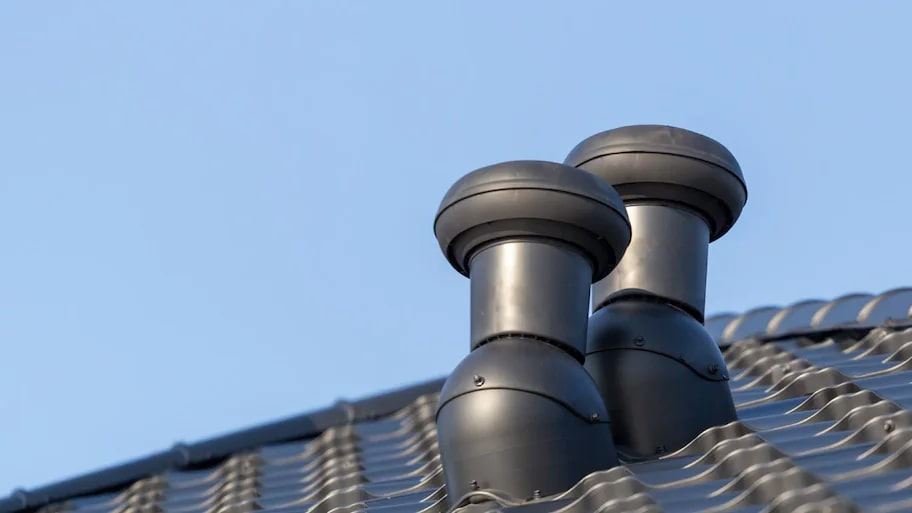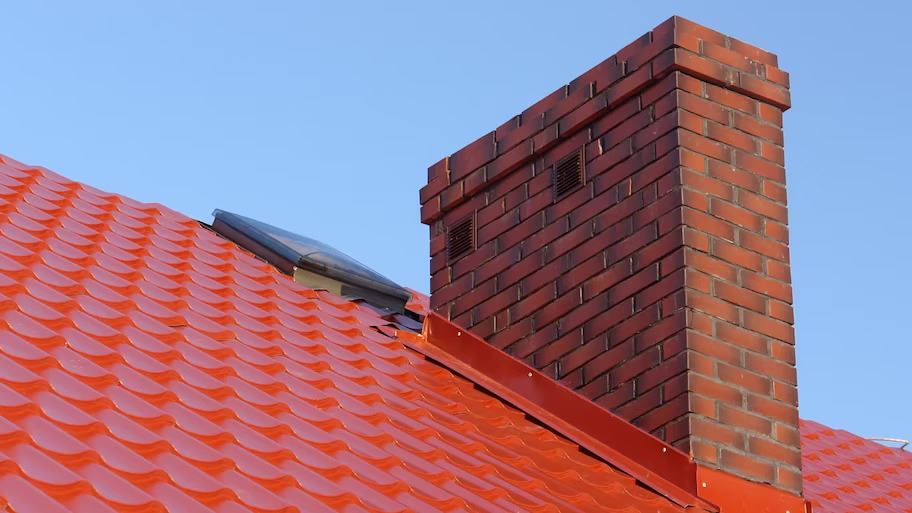Since the roof protects your house from outdoor elements, such as blistering heat and heavy snowstorms, a proper roofing system should handle any conditions. However, roofing problems are bound to happen. Leaving the damage unattended can lead to severe and costly issues that could affect the entire house if not repaired.
The best way to ensure a roofing problem doesn’t become a serious and costly repair is to learn more about the potential issues that can occur. That way, you’ll notice any problems and address them immediately.
1. Improper Roof Ventilation
Poor or improper attic ventilation can cause excess heat build-up in your attic; it could also damage the sheathing and deteriorate the shingles, leading to roof failure.
A few things can cause improper ventilation, including:
- Having a ridge vent and spray foam insulation
- Having a ridge vent on a hip and ridge roof where you should have an attic fan
- Having an attic fan and a ridge vent
- Having a ridge vent when you should have an attic fan
- Having too many intake areas (gable vents, soffit vents, etc.)
Poor ventilation also causes moisture to accumulate in your attic, raises the internal temperature of your home, and causes shingles to blister and crack. And in the winter, it can contribute to ice dams, which can cause structural and safety issues.
Have a contractor check out your ventilation to prevent or fix these issues.
2. Faulty Roofing Materials
Whether tiles were poorly installed, shingles were broken, or some of the materials flew off in a storm, once roofing materials get damaged or displaced, it compromises the integrity of your roof and causes many problems.
Even a high-quality, perfectly installed roof wears over time and becomes damaged because of the climate conditions. Some roof accessories do not last as long as the shingles and need to be replaced partway through the roof’s lifespan. Underestimating the importance of your shingles is a common rookie roofing mistake. While damaged or curling shingles don’t seem like an emergency, they expose your roof to weather conditions and make it more susceptible to damage. The longer damaged shingles go unfixed, the more likely you’ll experience problems that go deeper than the surface, such as rotting sheathing.
Call a local roof professional to inspect the roof and get the roof repaired before they can cause a significant issue.
3. Water Damage
After a downpour or snowstorm, standing water on your roof can lead to mold or mildew, which affects roofing material and causes leaks or structural damage. If your roof has any small penetrations or weak areas, standing water can seep through and cause a leak. This issue is more common on flat roofs, though it’s important every roof style has proper drainage.
A professional contractor should check on your roof regularly to help you avoid leaks or long-term problems.
Stagnant water can also cause ice dams that can lead to soffit or fascia board rotting, spreading to the rest of the roof. This is how you can end up getting pests and birds on your roof.
4. Roof Leaks
Roof leaks are common among homeowners and can occur for many reasons, such as insufficient insulation, improper ventilation, ice dams, worn pipe boots, or inadequate installations.
When you see water running down your walls, the reason is probably a leaking roof. Look for roof leak signs, such as water stains or mildew. Once you see a leak, the best you can do is fix it in time to minimize the damage. However, if left untreated, roof leaks cause expensive damage and structural problems.
If you see any signs of a roof leak, call a professional for a comprehensive inspection.
5. Incorrect Roof Flashing
Flashing is made of weatherproof plastic, aluminum, or steel. It’s installed at the weakest areas of your roof to protect creases on fixtures and connections such as chimneys or skylights, which helps to keep awkward areas sealed for leak prevention.
If flashing material breaks or cracks, the connections become vulnerable to water and moisture. Flashing needs to be properly attached and secured. Otherwise, you’ll experience problems around this area.
If you notice any damaged flashing, call a professional asap to get it repaired or replaced.
6. Poor Installation
Hiring inexperienced or poorly qualified roofing professionals can cost you money in the long run. Poorly installed roofs are among the most common reasons for mold, short life expectancy, and long-term complications.
While you may save some money upfront, taking this risk will lead to complex problems. It’s best to hire a top roofing contractor to professionally install your roof since this can be a dangerous project without direct experience.
Pro tip: Try to find out who is actually performing the roof installation. Maybe the sales rep that sells you on the roof is great and knowledgeable, but their team isn’t. Or perhaps they have some in-house crews, but also use untrained subcontractors. It never hurts to ask.
7. Damage From Trees
If a tree branch falls on your roof, it can cause major damage to the roof. But large branches are not the only culprit here. Smaller branches can cause more damage when they rub against your roof for a long time. They can slowly deteriorate the top layer of the roof, leading to shingles or flashing problems.
Debris and leaves from trees could also block water flow in gutters, causing water to seep into your home and cause damage and leaks. It’s safer for your roof if you could trim or remove trees that pose a serious danger to the roof’s integrity.
8. Clogged or Defective Gutters
Clogged or defective gutters can lead to leaks along with the roof’s edge and water backups that might eventually seep into the eaves, where they can rot. You can prevent this problem by having a roofer install a drip edge when you build or replace your roof. You can also avoid problems by routinely cleaning your gutters and installing gutter screens, which can prevent blocked gutters. If your gutters are clean and still overflow with water, be sure to inspect for possible gutter damage such as decay, rust, or cracks.
Clogged gutters can also imply falling granules—which is the roof’s top layer protecting shingles from UV rays. If that’s the case, you need to get them inspected and replaced before shingles start to crack. But if you have a brand new roof, some shingle granule loss is normal and nothing to worry about—sort of like finding lint in a dryer after washing a new towel. While it might seem like a harmless problem for the roof, clogged gutters can potentially cause leaks and expensive structural damage over time.
9. Neglect or Poor Maintenance
Many homeowners don’t realize it, but maintaining your roof is crucial. Ignoring routine maintenance can make small, unnoticed problems grow into large, costly ones.
“The biggest issue homeowners ignore is the need for regular roof maintenance” “While your roof should last 20 to 40 years, it needs maintenance every 7 to 8 years and semi-regular inspections in order to last that long.”
Schedule at least one roof inspection per year to ensure your roof is properly maintained for best results. If you live in an area with regular and strong winds, you’ll want to also get post-storm roof inspections. Contact a roofing contractor near you to schedule routine maintenance.
Pros also recommend getting a roof tune-up every 8 to 12 years. This job includes maintenance like fixing nail pops, replacing damaged shingles, sealing exposed nails, and replacing pipe boots.
10. Snow and Ice Damage
Roofing issues are more common during cold weather because ice and snow go through a freeze/thaw cycle. Water seeps sit underneath the shingles and freezes again when the temperature drops.
When ice accumulates, it expands and pushes against the flashing or shingles, lifts them, and leaves gaps that can allow even more ice or water to enter, posing a potential risk to your structural system. You’ll need to schedule local emergency roofing repair if this happens to you.
But if you simply suspect that your roof sustained some damage due to a big storm or a particularly harsh winter, you can call a roofer to come to check it out. That way, you will catch any possible issues and repair them before they become a bigger headache down the road.

.jpeg)